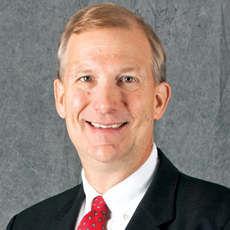

If you have ever been a parent of a young child, you undoubtedly have endured the mile-long question.
“Dad, can I stay up a little longer — pleasepleasepleasepleasepleeeeeease?”
“Mom, can I go to Tommy’s? CanI?CanI?CanI?CanI?CanI?HisparentssaiditwouldbeOK!CanI?”
Whether or not you’ve been a parent, if you run a nursing home, you’re liable to be experiencing a version of it soon. If you haven’t already.
The incredible drop in nursing home COVID-19 infections and deaths recently is jacking up expectations like a mouthful of Starburst candy in a child just before bedtime.
Residents are getting vaccinated in large percentages and an increasing number of their family members are too. After a year of good behavior, it’s only natural that they will start hitting you with questions about when normal visits can resume.
Answering those pleas is going to be tricky. A big issue is whether vaccinated individuals can still be virus carriers. Most scientists believe they can. But like so much with this novel (i.e. “new”) coronavirus, more study is warranted.
Regardless, intent family members may counter: What if resident and loved ones are both vaccinated against 95% of the potentially harsh symptoms? At what price should resident isolation continue?
How much risk providers and their charges are willing to assume is liable to take center stage. Just not very soon. Public policy makers do not appear inclined to nudge open any door yet to potential outbreaks.
In many places, just a single case involving a staff member, resident or other visitor, would send an entire facility back into weeks of lockdown.
Nonetheless, groups such as LeadingAge and AARP have already asked publicly for updated visitation guidance. Expect the American Health Care Association and others to join in.
The key is going to be getting amendments to certain governors’ executive orders that demand vast retrenchment if even a single case appears on campus.
All residents and workers shouldn’t have to pay the price for one positive case that might pop up. That’s especially true if the facility has already completed its three vaccination clinics, and new residents and workers are immediately offered inoculation.
It’s a lot more complex, however, than the vaccinated simply saying, “I got mine.” You can be sure regulatory discussions will be thick with liability and care implications.
While policy makers from the Centers for Disease Control and Prevention and the Centers for Medicare & Medicaid Services on down sort out the next steps, there are some things providers should be doing in anticipation of reopening.
Start preparations for Phase 2 of the vaccination program. So urged Marquis Companies and Consonus Healthcare President and CEO Phil Fogg Jr., the featured speaker at a popular McKnight’s webinar Thursday. (It can still be viewed in archive — just head to the registration page.)
Make sure your local pharmacy partner is properly applying for state and federal approvals. Develop your workflow capabilities now. The county might tell you one thing about visitations, but the state and feds might not agree, so you need to be ready to pounce on opportunity when unified progress occurs.
Plot your future screening processes. How will rapid testing be a part of the strategy? Will you offer vaccinations to a broadening net of family members to help the overall cause? When? How?
Because you will continually be welcoming new workers and residents, these are not once-and-done considerations.
At some point, you need to consider what level of risk you will settle on, Fogg emphasized. After all, when restrictions are eased — and make no mistake, they will be eventually — you might be willing to shoulder greater uncertainty if it means reuniting residents with their families quicker.
You also could be more willing if it means finally giving families and residents answers to pained questions that have been forming all these many long months.
Follow Executive Editor James M. Berklan @JimBerklan.




